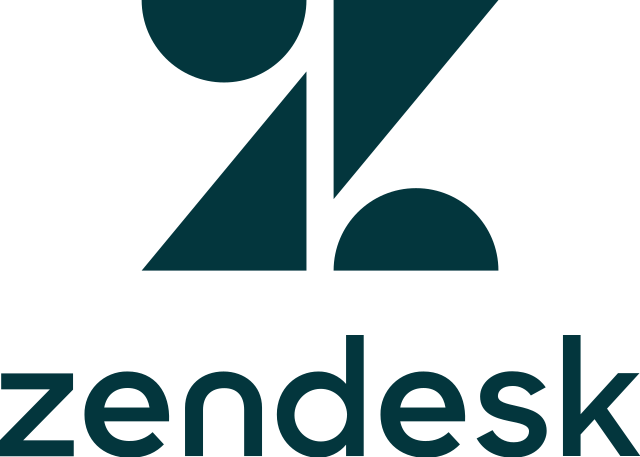In just 13 years, Zendesk went from a scrappy Danish startup to the industry leader in Customer Service Software. Today they have:
- 3500+ global employees
- 150,000+ paying customers
- $1030 million in annual recurring revenue (ARR)
With such competent leadership, it’s no wonder that Zendesk has, in the last 5 years, increased its enterprise value more than twelve-fold: from $1.4B in 2016 to $18.1B in 2021.
But what’s interesting is that even though Zendesk completely dominates its market, it got that way without relying on aggressive marketing tactics.
Rather, with their sprawling blog, Zendesk is a master at nurturing and educating. Their Ahrefs Rank is 167 out of a million, which places them in the top 0.02% of the websites with the strongest backlink profile.
Many SaaS companies don’t realize that the biggest growth opportunity is not in customer acquisition or retention, but in price optimization.
In fact, a 1% improvement in price optimization increases your profits, on average, by 11,1%. [*]
To prove that Zendesk puts a lot of thought into their pricing, let’s check a survey conducted by a SaaS pricing agency,
Profitwell surveyed 5,211 current, former, and prospective Zendesk customers about how much they’re willing to pay for Zendesk Support — one of the core products.
I call this Inward Expansion as opposed to Outward Expansion.
In Outward Expansion, your focus is on marketing, customer acquisition, and customer retention…
But in Inward Expansion, you’re increasing the value of your current customers with better customer experience, new products, and add-on upsells.
Why would you do that?
Because in the outward expansion business model, no matter how hard you try, your revenue will plateau.
You see, profit in account-based subscription services (like SaaS) depends on two things:
- How many customers you have
- How much money they’re giving you
But keep in mind that a portion of your customer base will leave every month. This is called company’s churn rate.
Since churn is relative, the more customers you have the more you’ll lose. But adding new customers is absolute — each acquisition costs a set amount of money (CAC: customer acquisition cost)…
This means you’ll have to spend more and more money offsetting bigger and bigger churn losses. Sure, you can try to scale your marketing, but even that will eventually collapse.
That’s why Zendesk shifted its focus from getting new customers to increasing the lifetime value (LTV) of existing customers.
To prove my point, this is how much an average Zendesk user was spending on Zendesk products from 2013 to 2020.
Before we wrap this chapter, there’s something we need to say about Zendesk’s sales team.
Having a great content strategy and online marketing is the key to successful Outward Expansion…
But marketing by itself can’t close big deals, create tailored solutions, or spot upsell opportunities — everything that’s crucial for Inward Expansion.
For that, you’ll need a sales department.
“At the beginning most of our sales came from our online business. A bunch of people came to our website, they would sign up for the product trial, and they would purchase online. While this strategy was sustainable at smaller sales volumes with a shorter sales cycle, we knew that growing the business meant spending more time on direct sales process and customer success channels.”
Based on my estimations, one Zendesk salesperson handles roughly 50 accounts and is responsible for, on average, $37,800 in monthly revenue.
I believe many new SaaS companies undervalue the power of a sales force. In the past few years, digital marketing positioned itself as the holy grail of any business. But marketing can only get you so far. Having a capable sales team is a must — especially if you’re selling high-ticket products or services.
Immediately, Zendesk displays the standards in your industry for customer satisfaction, first reply time, and average handle time, and more.
If you have even the slightest idea about what’s going on in your customer experience department, these numbers raise an alarm: It’s very likely you’re underperforming in at least one of the six metrics.
Zendesk knows they likely surfaced a problem, that’s why they offer three solutions:
- They invite you to explore the customer experience trends more deeply with a CTA that leads to Zendesk CX Trends — their second marketing tool made to put you in their lead database. (We’ll return to this one in a moment.)
Here, Zendesk drills the fact that your customer support could use a facelift by comparing your CSAT scores with the CSAT scores of your competitors.
After that, the dark green section contains two options:
- Click on “Get the trends” and you’ll get Zendesk’s infamous 41-pages long yearly report on CX trends.
- Click on “How to apply [the trends]” and you’ll get a short case-study on a competitor from the industry you chose:
Here, Zendesk creates immense social proof by showcasing their biggest clients (#1, #4). They also show you which products these clients are using (#2): an attempt to induce fear of missing out and convince you that you also need these products to become a “high-performing” company (#3).
In case you didn’t click on any of the two buttons and scroll down, you are (again) met with product recommendations and some additional benchmarks similar to the ones at the start of this funnel.
